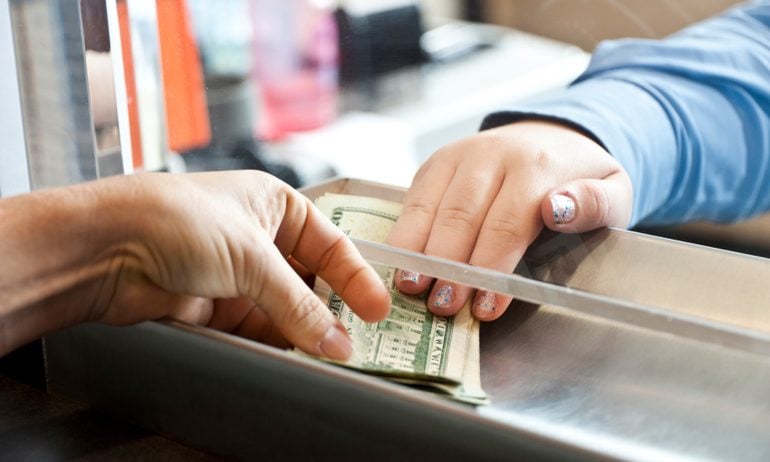Banking Terms and Definitions

Many, or all, of the products featured on this page are from our advertising partners who compensate us when you take certain actions on our website or click to take an action on their website. However, this does not influence our evaluations. Our opinions are our own. Here is a list of our partners and here's how we make money.
When you're dealing with your finances, unfamiliar words and acronyms can make complicated processes even more confusing. Here's a quick guide to help you navigate banking terms.

Member FDIC
Forbright Bank Growth Savings

4.25%
$0

Member FDIC
Axos ONE® Savings

4.66%
$1,500

Member FDIC
Varo Savings Account

5.00%
$0

Member FDIC
E*TRADE Premium Savings

4.00%
$0
A
ACH
Automated Clearing House, a system operated by the National Automated Clearing House Association that banks use to process electronic transfers such as direct deposits and tax refunds.
APR
Annual percentage rate. The amount of interest you gain from keeping money in an account in a year, not including compounding interest.
APY
Annual percentage yield. The amount of interest you gain from keeping money in an account in a year, including compounding interest.
ATM CARD
A plastic card issued by a financial institution that gives you access to an ATM. It does not necessarily allow you to purchase items as a debit card would.
ATM FEE
A fee that banks and interbank networks charge when you use an ATM outside your bank's network.
C
CASHIER'S CHECK
A check issued by a bank, usually for a fee, funded by the bank's money and signed by a cashier or teller. It may be requested by some sellers in place of a personal check to ensure the check won't bounce for lack of funds.
CERTIFICATE OF DEPOSIT
Commonly known as a CD, an account in which you deposit money for a specified length of time. The account typically pays higher interest rates than standard savings and checking accounts.
» MORE: NerdWallet's best CD rates
CD LADDER
A way of organizing a sum of money into separate certificates of deposit of varying lengths so that they mature at different times. The method allows greater accessibility to your money than putting all of it in one certificate for a long period.
CHECKING ACCOUNT
An account at a financial institution into which you can deposit money and from which you can write checks for purchases. Most people use checking accounts to receive their wages and pay their bills.
CHEXSYSTEMS
An agency that banks use to see whether you have mishandled any accounts in the past. Banks and credit unions communicate with ChexSystems when you apply to open a new account with them.
COMPOUND INTEREST
Interest that applies to the original deposit as well as any newly earned interest. For example, if you put $100 in an account that earns compound interest at 5% a year, in the next year you will earn 5% on $105. Non-compounding interest would continue to earn 5% on $100.
CREDIT UNION
A financial institution similar to a bank that is not-for-profit and is owned by its members. Credit unions tend to have reduced fees, higher saving rates and lower loan rates than banks.
D
DEBIT CARD
A plastic card issued by a financial institution that allows access to ATMs and can be used to pay for items at stores or online. Funds are drawn directly from your checking account.
DIRECT DEPOSIT
Money transferred directly from a payer's account to a recipient's account electronically rather than with a paper check. It is typically used for paychecks, Social Security checks, pensions or other recurring payments.
DIVIDENDS
The interest paid on money in a savings account at a credit union.
DORMANT ACCOUNT
An account, usually checking, savings or money market, that has had no activity for a certain period of time, which varies from state to state. Accruing interest is not considered an activity.
E
EARLY CLOSURE FEE
A fee that financial institutions may charge customers for closing an account before a specified amount of time from when it was opened, usually several months.
F
FDIC
The Federal Deposit Insurance Corporation. A government-run organization that insures customers' bank deposits up to $250,000 if the bank fails.
FOREIGN TRANSACTION FEE
An extra charge that you may incur when you use a debit, ATM or credit card in a foreign country.
I
INACTIVITY FEE
A fee your financial institution may charge you if you have not made any transactions in an account for a specified time.
INTEREST RATE
The rate the bank pays on the money in your accounts.
J
JOINT ACCOUNT
A bank account that has two owners who can access and view transactions. The accounts are commonly used by couples, parents and their teenage children, and adults assisting aging parents.
» MORE: How to write a check
L
LINKED ACCOUNT
A checking or savings account that's connected to another account, usually with the same owner, to facilitate transfers between the two.
M
MOBILE BANKING
The process of accessing or using banking products and services through a mobile device. It's usually accessed through an app your financial institution provides.
MOBILE DEPOSIT
A way to deposit checks into your bank account using your mobile device. It typically requires you to take a picture of the check and send that picture to your bank through an app.
MOBILE WALLET
A program that allows you to hold common financial items such as credit cards, debit cards or store loyalty cards in digital form on a mobile device. They are usually collected under one app.
MONEY MARKET ACCOUNT
An account similar to a savings account that typically pays higher interest rates and a higher minimum balance requirement. Some also may have limited check-writing and debit card capabilities.
MONEY ORDER
A prepaid, secure way to send money to others, issued by a bank or post office. It is a physical slip of paper and must be signed by both the sender and receiver for it to be valid.
N
NCUA
The National Credit Union Administration. A government organization that regulates and supervises credit unions, and insures up to $250,000 worth of deposits.
NSF FEE
Non-sufficient funds fee. A fee your bank or credit union charges when you don't have enough funds in your account to cover the amount of a check. An NSF fee means the bank rejected the check or card payment.
O
ONLINE BANK
A bank that is operated entirely online. Most offer higher interest rates or lower fees because they don't have to maintain branches.
OVERDRAFT FEE
A fee incurred when your checking account doesn't have enough funds to cover a payment that is requested. The financial institution will pay what your account lacks, after which your account may have a negative balance.
OVERDRAFT LINE OF CREDIT
Money you borrow from your bank or credit union if you go over the amount available in your account. You will have to pay interest on the overdraft.
OVERDRAFT PROTECTION
A service offered by financial institutions that allows you to pay for an item even though you don’t have the total funds available in your account. This means your card will not be denied, but the service usually comes with a hefty fee.
P
PEER-TO-PEER (P2P) AND PERSON-TO-PERSON PAYMENTS
A way to send money from your checking account or credit card to another person's account through the internet. Many P2P platforms are used on mobile devices, including platforms such as Venmo, PayPal and Snapcash.
PREPAID DEBIT CARD
An alternative plastic banking card that must be loaded with money before it can be used. Only the amount put on the card may be spent. Once loaded, the card can be used like a regular debit card.
R
RELATIONSHIP INTEREST RATE
A higher amount of interest you can get on your checking, savings or certificate accounts, if you hold other accounts at the same financial institution. Availability depends on the financial institution.
RETURNED ITEM FEE
A bounced-check fee, charged to the person trying to deposit the check. It can be charged if there are insufficient funds in the check writer's account or the account is closed.
ROUTING NUMBER
A nine-digit number that identifies your financial institution. Larger banks may have multiple routing numbers that are based on the geographic location where the account was opened.
S
SAFE DEPOSIT BOX
A secured container in a vault at a bank or credit union that only its owner(s) can access. It comes with a yearly fee and can be used to store valuable items such as jewelry, keepsakes or important documents.
SAVINGS ACCOUNT
An account that usually pays interest at a financial institution that holds money you want to keep for long-term goals or emergencies.
SAVINGS AND LOAN ASSOCIATION
A financial institution that accepts deposits in exchange for a share of ownership, and primarily lends money for mortgages. Deposits are insured by the FDIC for up to $250,000.
SHARE CERTIFICATE
The equivalent of a certificate of deposit for credit unions. An account in which deposits are left for a designated period of time to collect interest. Interest rates for share certificates are often higher than rates for savings and checking accounts offered at the same financial institution.
SHARE DRAFT ACCOUNT
The equivalent of a checking account for credit unions. It functions the same way as a checking account but indicates that you are a partial owner of the credit union.
STOP PAYMENT
A request you can make to your financial institution to deny a check or payment that has not cleared.
T
TIME ACCOUNTS
Another name for a certificate of deposit. An account that holds your money for a specified amount of time and typically offers higher interest rates than a regular savings or checking account.
W
WIRE TRANSFER
A quick way to send money electronically to another person, domestically or internationally, through a bank or another provider.
WITHDRAWAL LIMIT FEE
A federal limit on how many times you can transfer and withdraw money from your savings or money market account, which is six times per month. Going above the cap usually results in a charge from your financial institution.








